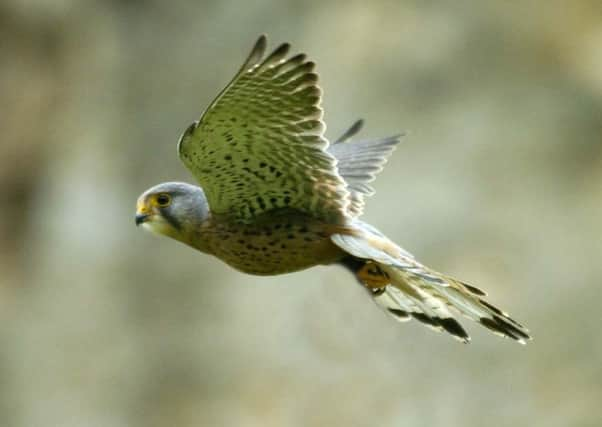Much-loved bird of prey causing a flap in wildlife circles


A former opencast mining site on the outskirts of Leeds is not the most likely of wildlife havens.
However, a few months ago an 1,2000-tonne dragline, known locally as the Oddball, was turned into what the RSPB dubbed as “possibly the world’s largest nesting box”. A pair of kestrels and their four chicks had taken up residence in the steel structure which dominates the skyline of St Aidan’s.
Advertisement
Hide AdAdvertisement
Hide AdIt was a rare piece of good news for the species Ted Hughes once described as hovering “steady as a hallucination in the streaming air”. Over the last few years those cruciform shapes suspended above the roadside have been spotted less often. They have disappeared too from our parks, villages, playing fields and wastelands – all typical kestrel stomping grounds.
Last year wildlife officers condemned the senseless shooting of a kestrel at High Batts Nature Reserve near Ripon. With its wing shattered by shotgun pellets there was no option but to put it down, but the general decline has occurred with little media fanfare. In the last 25 years the kestrel population has declined by around 30 per cent and it is now listed as a species of conservation concern across Europe.
The falcon was until recently our most common and well-known bird of prey. Affections for it soared following Barry Hines’s hugely successful 1968 novel A Kestrel for a Knave, which charted the relationship between an alienated teenager and his pet bird. Ken Loach’s film Kes, based on Hines’s book, cemented the kestrel’s place in the nation’s heart. It was seen as approachable and knowable, unlike the psychotic staring sparrowhawk and the all too rare peregrine.
The kestrel’s dramatic decline is doubly shocking as until recent decades it was viewed as a species that had managed to adapt to the rapid modernisation of our landscape. The bird, which also inspired Gerard Manley Hopkins’s poem The Windhover, lived in our towns and cities and even managed to hunt in the most inhospitable strips of land between our very fastest roads.
Advertisement
Hide AdAdvertisement
Hide AdThe reason for the decline is unclear, but our willingness to farm the kestrel out of the landscape, a fate that has befallen many other species, is likely to be a major factor.
Matt Stevens from the Hawk Conservancy Trust explains: “It’s difficult to be certain but there are a number of possible reasons. The most likely is a change in land management. Changing agricultural practices and agricultural intensification is likely to have had a major effect. Increased stocking densities of sheep and cattle on grasslands reduces grass length and results in fewer numbers of the small mammals kestrels prey upon.
“The reduction of wild flower populations results in fewer insects and seeds which again means fewer small mammals for the kestrel.
“Other factors include loss of hunting and nesting sites and widespread use of pesticides, which reduces populations of ‘weed’ species and invertebrates which impacts on species dependent on them for food. We have also seen a loss of rougher ‘marginal land’ which previously held populations of invertebrates and small mammals.”
Advertisement
Hide AdAdvertisement
Hide AdIt was this rough marginal land that made our motorway verges so attractive to habitat-starved kestrels in the first place – they presented long strips of undisturbed grassland teeming with their favourite food, field Voles.
So can the fate of our kestrels be reversed? Mr Stevens thinks there is still reason for optimism.
“A goal of halting the decline and maintaining a healthy population of kestrels is perhaps the most suitable approach and one which may allow for an increase in the future,” he explains.
“A reversal of the decline of kestrels is also likely to be reliant on a change in the way that the UK landscape is managed. Greater importance will need to be placed on the quality of, and connectivity between, habitats to ensure that populations of all native flora and fauna improve.”
Advertisement
Hide AdAdvertisement
Hide AdAs ever with our wildlife, it seems farmers may hold the key to the kestrels’ future, but in the meantime you can do your bit for the bird from the passenger seat.
The public is being asked to send in their kestrel sightings to the Hawk Conservancy Trust to help build up the overall picture of how these falcons are faring.
The good news is that a number have already been recorded in the county but a full picture of how the birds are faring won’t be known until the count is completed next year.
To record a sighting visit www.kestrelcount.org.